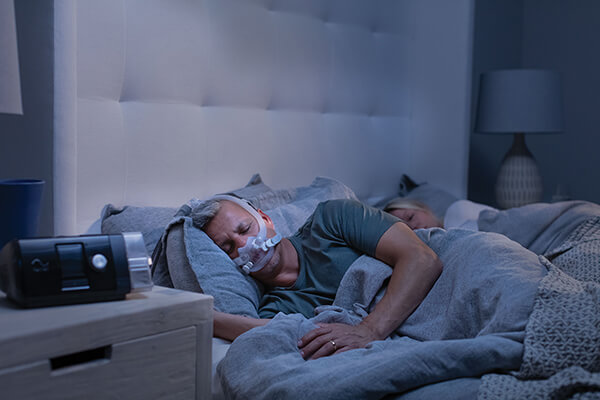This is Part 2 of a four-part article, for Part 1- please click here.
In Part I, I described my reasons for pursuing treatment for Obstructive Sleep Apnea, my mask fitting appointment, my experience with selecting a mask, and receiving my machine. Once the appointment was finished, I took the machine home and eagerly unpacked it from its little travel case, and set it up on my nightstand.
For the first few months, Medigas Manitoba monitored my sleep data to ensure that I wasn’t encountering any problems during my introduction to therapy. My CPAP machine has a wireless cellular chip that broadcasts my sleep data to central servers so that Medigas Manitoba can monitor my progress. The wireless cellular chip works both ways, so they can also reprogram the machine settings remotely. This saved me from having to book an appointment and take the machine in to be adjusted; Medigas Manitoba was also able to make changes over the network, and the settings would sometimes be updated instantly while I was still talking to the Medigas Manitoba representative on the phone.
Over the next several weeks, I would be going through a process known as “titration,” which means finding the optimal operating pressure for the eventual permanent pressure setting for the CPAP machine, not unlike how a doctor will adjust medication to determine the most effective dosage for a patient. My CPAP machine used an automatic variable pressure setting that would test a range of different pressures. Over the course of a few weeks of usage, the machine would gather enough data to determine the optimal pressure that worked best to minimize the number of times that I would stop breathing during the night. That would then become my permanent pressure setting. I found lower pressures to be quite tolerable, but I found the higher pressures to be almost stifling.
I was very happy with my CPAP machine, and I was amazed at the technology. I was surprised that it could operate so quietly. I had heard that older CPAP machines used to be quite noisy, so I was relieved to find that I really couldn’t hear anything from the machine at all. The masks are made with an ingeniously designed silicone cushion that fills with air and creates a seal against your face. My model of CPAP machine starts automatically as soon as you put the mask on and breathe into it, so I didn’t have to push any buttons to start it or worry that I might forget to turn it on. My machine also has an auto shut-off feature that senses the pressure drop when the mask is removed and then turns the machine off after a couple of moments.
On a few occasions during the monitoring period, I got a call from Medigas Manitoba to let me know that my leak rate was above acceptable levels. The service representative advised me that if the mask seal is insufficient and there is too much air leaking, the therapy may not be effective. Accordingly, she told me that I should make sure my straps were tight, and she reminded me that I could always book another mask fitting if I needed additional assistance. I was a little surprised, but it was reassuring to know that Medigas Manitoba was looking out for me. If they hadn’t called, I might never have known.
I quickly discovered that I wasn’t being careful enough with the elbow fitting when connecting the hose to my mask, and instead of clicking and locking it into place, I was leaving it only partially seated, which left a gap and created a leak. It happened a few times, and some mornings I would notice that the fitting wasn’t seated, and I knew that I’d be getting a call. I made it part of my daily routine to make sure that the elbow fitting was properly seated and attached, and then I had no further issues with it. I also made it a regular habit to make sure that my straps were snug enough to create a good seal.
As I continued to use the machine faithfully every night, I did start to notice a gradual improvement. I was starting to sleep much better, and my sleep schedule was starting to become more routine, which actually ended up helping to alleviate the nearly life-long insomnia I had suffered.
In Part 3, I will discuss my adjustment in getting used to sleeping with the mask and the air pressure, and how I used the settings on my CPAP machine to make my therapy more comfortable.





